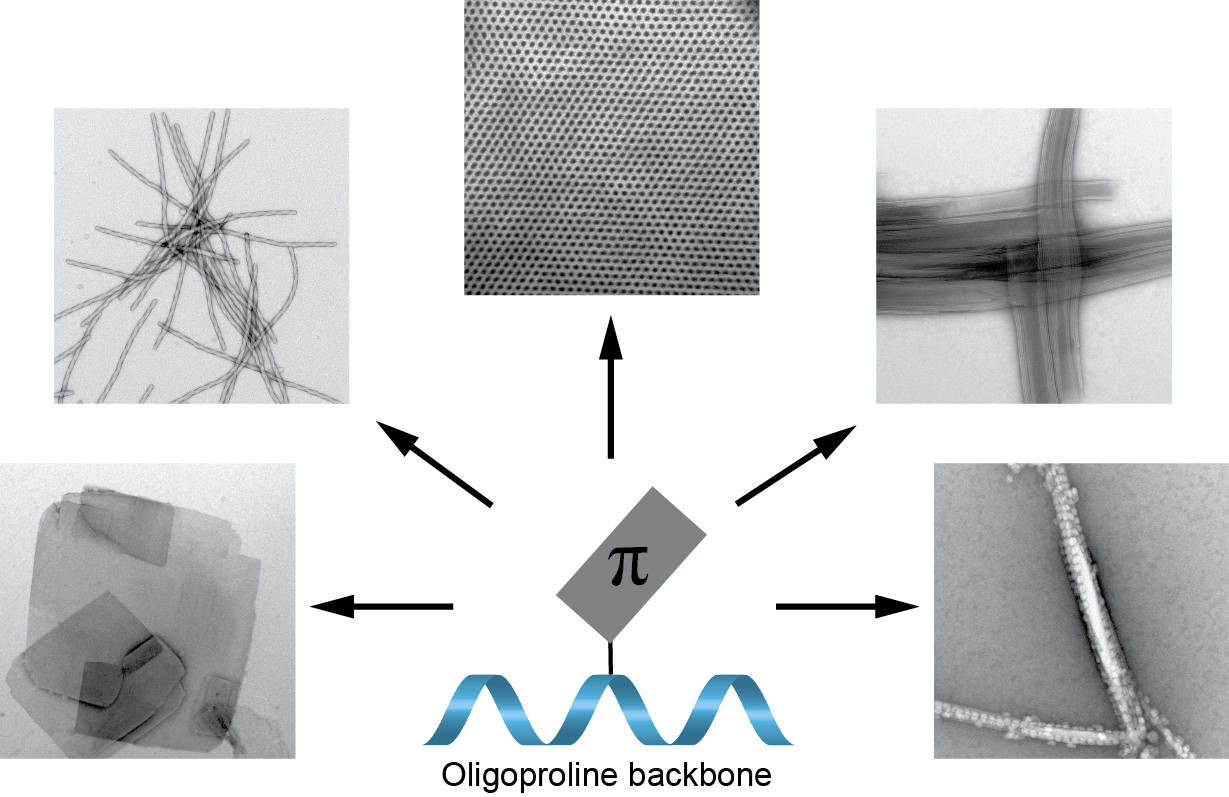Functionalizable oligoprolines as a platform for the development of extended self-assemblies with tunable morphologies
Self-assembly of π-conjugated building blocks has become increasingly important for the fabrication of functional nanostructures. Towards this goal, peptides, which readily adopt well-defined secondary structures and are highly modular, have been used to direct chromophore self-assembly into well-organized, chiral nanostructures.1 The assembly of these conjugates has been controlled by exploiting hydrogen-bonding networks within the peptides. Here we will present the formation of highly ordered supramolecular structures built on non-self-assembling peptidic scaffolds.

Using oligoprolines as scaffolds to direct the self-assembly of conjugated systems, we achieved the hierarchical self-assembly2,3 of various types of chromophores into fibrils, sheets, and advanced, novel topologies. Variation in length of the oligoproline and choice of chromophore and linker has allowed for facile access to a variety of supramolecular structures that do not rely on H-bonding between peptides. Thus, oligoproline π-system conjugates constitute novel and efficient tools for self-assembly towards functional nanostructures.
+ This work was performed in collaboration with Prof. K. Müllen (Max Planck Institute, Mainz) and Prof. Peter Bäuerle (University of Ulm)
[1] Ardoña, H.A.M. & Tovar, J. D. Bioconjugate Chem., 2015, 26, 2290
[2] Lewandowska, U., Zajaczkowski, W., Chen L., Bouillière, F., Wang D., Koynov, K., Pisula, W., Müllen, K., Wennemers, H. Angew. Chem. Int. Ed. 2014, 53, 12537
[3] Lewandowska, U., Zajaczkowski, W., Pisula, W., Ma, Y., Li, C., Müllen, K., Wennemers, H. Chem. Eur. J. 2016 22, 3804